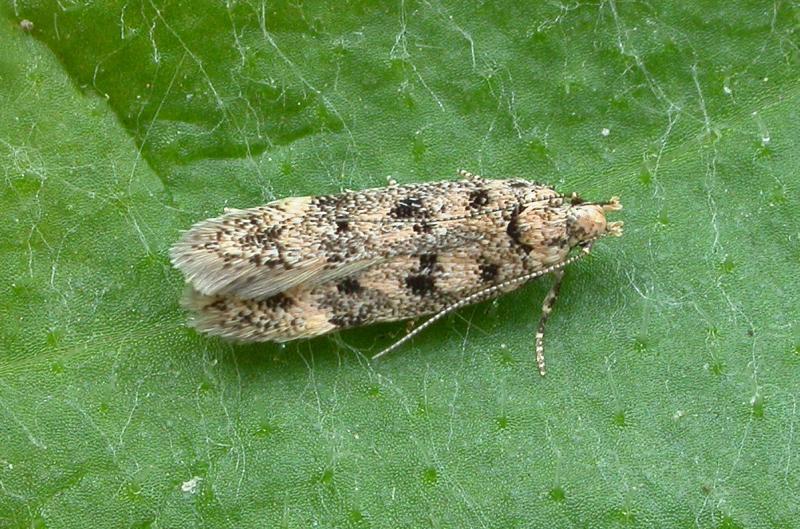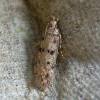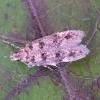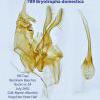35.038 Bryotropha domestica (Haworth, 1828)
Status and Distribution
Widespread and common over much of England; more local in northern parts of England, Wales, Ireland, Northern Ireland and Isle of Man. Very local in southern and central Scotland. Records from North-east Scotland (commencing in 2009) and a single record from Inverness, in 2015, suggest it may be extending its range northwards.

Provisional map
Foodplant and Larval Feeding Signs
Tortula muralis (wall screw-moss), see plant distribution map, and probably other mosses on walls.
Feeds within a silken gallery.
Habitat
Most frequently encountered in urban or suburban areas.
Finding the Moth
Larva: the fully grown larva has been found feeding outside the silken gallery, especially early on wet or dewy mornings.
Adult: comes readily to light in small numbers.
Similar Species
The forewing patterning and colour combinations make Bryotropha domestica a distinctive species. The first plical stigma (just below the leading edge and about one third across the forewing) is directly above the second discal stigma, only found in two other much more local British species, B. basaltinella and B. dryadella. These two are slightly smaller (wingspan of B. domestica 12-13mm compared with 10-12mm in B. basaltinella and B. dryadella) and darker species with comparatively broader forewings. Pale forms of B. dryadella can be distinguished by the much darker hindwing.
Single brooded, with a prolonged period of emergence from early June to early September. Occasional sightings in May and to the end of September are not unusual but are relatively few in number.
Earliest: 8th May 1990 (VC2). A late April record related to a moth found indoors while a much earlier record exists but requires confirmation.
Latest: 11th October 2001 (VC63)





